Big Parrots – 6 Massive Species That Will Amaze You
The world of big parrots encompasses some of nature’s most magnificent and awe-inspiring avian creatures. These colossal birds captivate wildlife enthusiasts and ornithologists alike with their impressive wingspans, powerful beaks, and extraordinary intelligence. From the vibrant plumage of South American macaws to the unique characteristics of flightless species, big parrots represent the pinnacle of avian evolution in terms of size and sophistication.
Understanding these remarkable creatures requires delving into their diverse habitats, behavioral patterns, and the conservation challenges they face. Big parrots have evolved across different continents, each adapting to their specific environments while maintaining the core characteristics that make them such fascinating subjects of study.
Table of Contents
The Fascinating World of Large Parrot Species
Big parrots inhabit various ecosystems across the globe, from tropical rainforests to arid landscapes. These magnificent birds have developed unique adaptations that allow them to thrive in their respective environments. Their size serves multiple purposes: intimidating predators, accessing food sources that smaller birds cannot reach, and establishing dominance within their social hierarchies.
The evolutionary journey of big parrots spans millions of years, with fossil evidence suggesting that some prehistoric species were even larger than their modern counterparts. Today’s big parrots represent the culmination of countless generations of natural selection, resulting in perfectly adapted creatures that embody both beauty and functionality.
Understanding Parrot Size Classifications
When discussing big parrots, ornithologists typically categorize them based on multiple measurements including length, wingspan, and weight. The largest parrot by length in the world, the hyacinth macaw is 1 m (3 ft 3 in) long from the tip of its tail to the top of its head and weighs 1.2–1.7 kg (2 lb 10 oz – 3 lb 12 oz), while other species may be shorter but significantly heavier.
The distinction between different categories of big parrots becomes crucial when understanding their ecological roles. Some species excel in aerial maneuverability despite their size, while others have evolved terrestrial lifestyles that emphasize different physical characteristics.
The Magnificent Hyacinth Macaw: King of Big Parrots
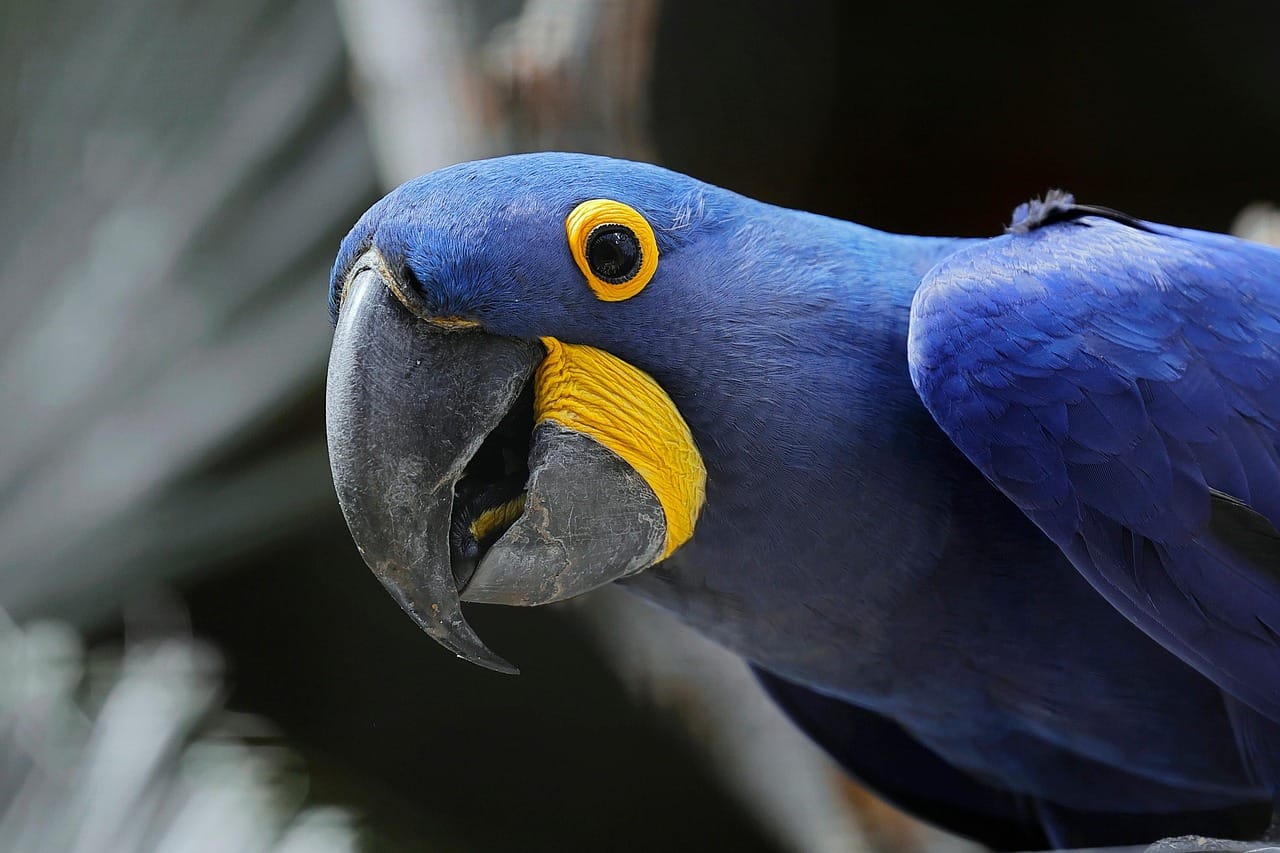
The beautiful blue hyacinth macaw is the largest of all parrots, commanding attention with its stunning cobalt-blue plumage and impressive stature. These big parrots inhabit the Pantanal wetlands of Brazil, Bolivia, and Paraguay, where they have become synonymous with the region’s biodiversity.
Hyacinth macaws possess remarkable intelligence and form lifelong pair bonds with their mates. Their powerful beaks, capable of cracking the hardest palm nuts, serve as both tools and weapons. With bright blue feathers and a powerful beak, the hyacinth macaw cracks open the hardest of nuts and scatters seeds throughout the wetlands of South America.
Physical Characteristics and Adaptations
The hyacinth macaw’s physical attributes make it the most recognizable among big parrots. Their wingspan can reach over four feet, allowing them to soar gracefully across vast distances in search of food and suitable nesting sites. The distinctive yellow eye patches and facial skin create a striking contrast against their brilliant blue feathers.
Their beaks generate incredible pressure, estimated at over 200 pounds per square inch, making them capable of accessing food sources unavailable to smaller parrot species. This adaptation has positioned hyacinth macaws as keystone species in their ecosystems, as they break open nuts and feed on the kernels inside, the seeds from these tree species can be spread throughout the forest as the birds fly.
Habitat and Behavioral Patterns
These big parrots prefer semi-open woodlands and savannas, avoiding dense forest environments. Their daily routines involve extensive foraging flights, social interactions with other macaws, and elaborate courtship displays during breeding season. The pair bonds formed by hyacinth macaws are among the strongest documented in the avian world.
Conservation efforts for hyacinth macaws focus on habitat preservation and anti-poaching measures. Hyacinth Macaws are currently classified as vulnerable by the International Union for Conservation of Nature (IUCN). This is due to several factors, including habitat destruction, illegal pet trade, and hunting. Their slow reproductive rate compounds these challenges, as mature pairs typically produce only one or two offspring every few years.
The Remarkable Kakapo: Heaviest of All Big Parrots
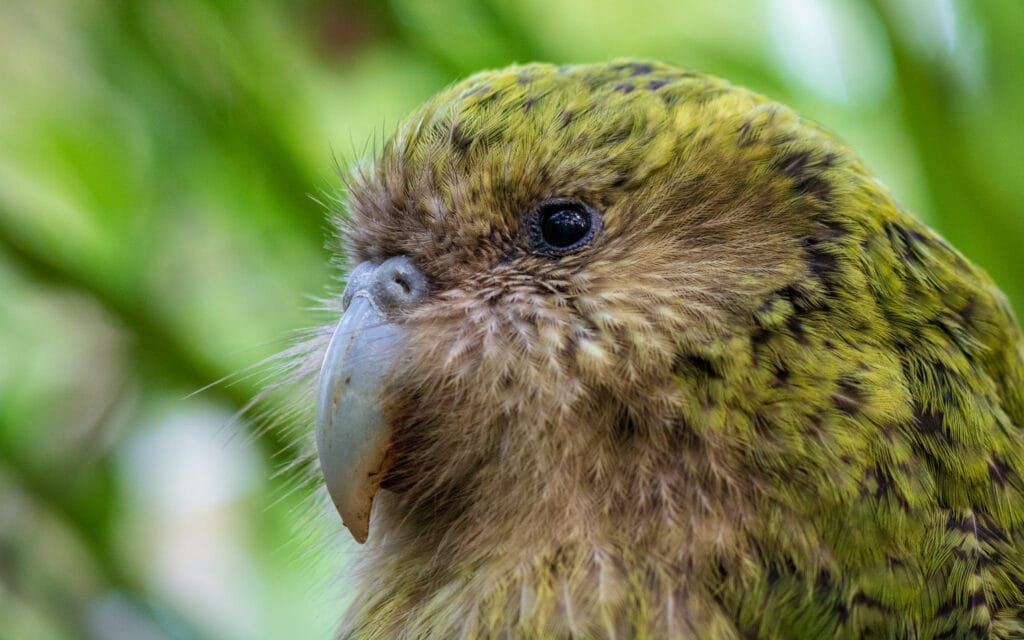
The kakapo represents one of nature’s most extraordinary evolutionary experiments among big parrots. Kākāpō are the heaviest living species of parrot and on average weigh about 400 g (14 oz) more than the largest flying parrot, the hyacinth macaw. This flightless giant of New Zealand embodies unique adaptations that set it apart from all other parrot species.
Heaviest of the world’s parrots, the 64-cm (25-inch) kakapo weighs up to 6 kg (13 pounds) and has moss-coloured green-and-brown plumage. Their cryptic coloration provides excellent camouflage among the forest floor vegetation where they spend their lives foraging for native plants and fruits.
Unique Evolutionary Adaptations
The kakapo’s flightless nature represents a remarkable evolutionary adaptation to New Zealand’s predator-free environment before human colonization. The only flightless parrot in the world, the kakapo is critically endangered due to human encroachment and the introduction of non-native predators to its habitat.
These big parrots have developed exceptional climbing abilities, using their powerful legs and claws to navigate through forest canopies. Their wing muscles, while incapable of sustained flight, help them glide short distances and maintain balance while climbing. The kakapo’s nocturnal lifestyle further distinguishes it from other big parrots, with specialized adaptations for night vision and sound-based navigation.
Conservation Challenges and Success Stories
Kakapo conservation represents one of the most intensive wildlife management programs in the world. With fewer than 250 individuals remaining, every kakapo is known by name and closely monitored. The species’ slow reproductive cycle, with breeding occurring only every few years when rimu trees produce abundant fruit, adds complexity to conservation efforts.
Modern conservation techniques include supplemental feeding, predator-proof island sanctuaries, and advanced genetic management to maintain population diversity. The dedication of conservationists has stabilized the kakapo population, though these big parrots remain critically endangered.
Palm Cockatoos: Australia’s Impressive Big Parrots
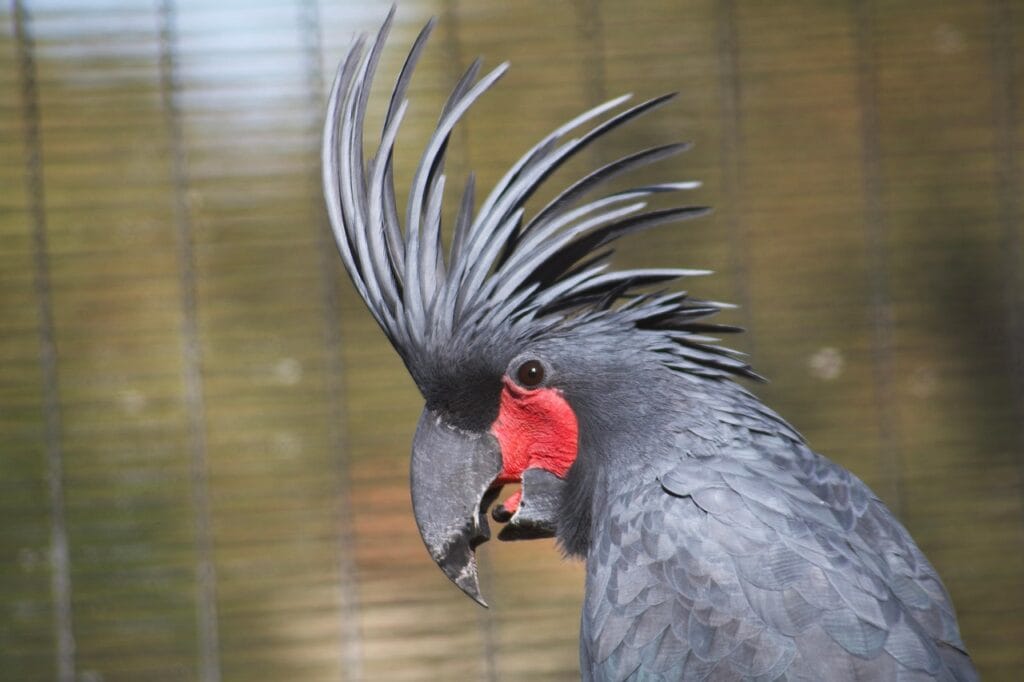
Also known as the Goliath cockatoo or great cockatoo, the palm cockatoo (Probosciger aterrimus) is the largest parrot in Australia and the largest cockatoo in the world. The palm cockatoo is 55 to 60 cm (22 to 24 in) in length and weighs 910–1,200 g (2.01–2.65 lb).
These magnificent big parrots inhabit the rainforests of northern Australia and New Guinea, where their distinctive appearance and behaviors have made them subjects of extensive scientific study. Palm cockatoos possess several unique characteristics that distinguish them from other members of the cockatoo family.
Distinctive Features and Behaviors
Palm cockatoos display remarkable sexual dimorphism, with males typically larger than females and possessing more prominent casque formations atop their heads. Their jet-black plumage contrasts dramatically with bright red cheek patches that can change color intensity based on emotional state and arousal levels.
Perhaps most fascinating among big parrots, palm cockatoos demonstrate sophisticated tool use. Males craft drumsticks from twigs and seed pods, using them to create rhythmic beats on hollow logs as part of elaborate courtship displays. This behavior represents one of the few documented examples of tool use for musical purposes in the animal kingdom.
Reproductive Challenges and Longevity
Palm cockatoos only lay one egg every second year and have one of the lowest breeding success rates reported for any species of parrot. This reproductive strategy reflects their extremely long lifespan, with some individuals living over 100 years in captivity. The extended juvenile period allows young palm cockatoos to learn complex social behaviors and survival skills from their parents.
Their low reproductive rate makes palm cockatoo populations particularly vulnerable to habitat loss and collection pressures. Conservation efforts focus on protecting nesting sites and maintaining connectivity between fragmented forest habitats.
Great Green Macaws: Critically Endangered Giants
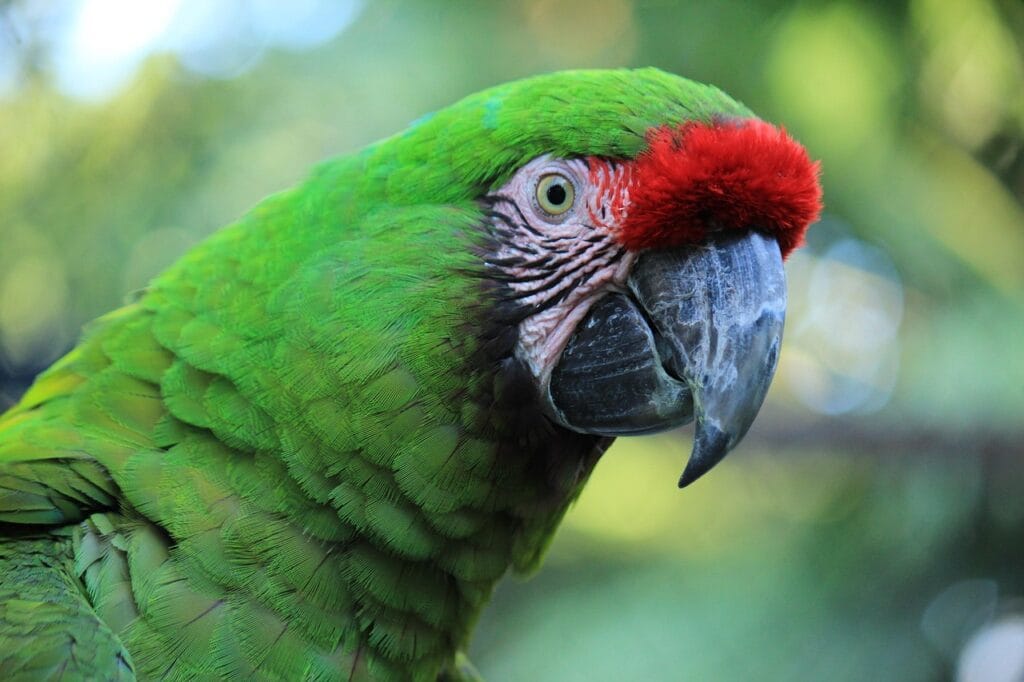
Great green macaws are the largest parrots in their natural range, which extends from Honduras to northern South America. They are the second heaviest macaw species (Hyacinth macaws are heavier) and the third heaviest parrot species in the world. These magnificent big parrots face severe conservation challenges that have placed them among the world’s most endangered avian species.
The great green macaw’s impressive size and striking appearance make it one of the most sought-after species among big parrots. Their predominantly green plumage, accented with blue and red markings on the wings and tail, provides excellent camouflage within their forest habitats.
Habitat Requirements and Ecological Role
Great green macaws depend heavily on specific tree species for both food and nesting sites. Their diet consists primarily of almendro nuts, which they crack open with their powerful beaks. This feeding behavior makes them crucial seed dispersers, contributing significantly to forest regeneration and biodiversity maintenance.
These big parrots require large territories to meet their nutritional needs, with pairs often traveling several kilometers daily between feeding and roosting sites. Their preference for old-growth forests puts them in direct conflict with logging operations and agricultural expansion throughout their range.
Conservation Status and Recovery Efforts
This species is listed as Critically Endangered on the IUCN Redlist, with fewer than 2,500 individuals remaining in the wild. The primary threats include habitat destruction, illegal capture for the pet trade, and climate change impacts on food availability.
Conservation organizations work closely with local communities to establish protected corridors and promote sustainable land use practices. Captive breeding programs contribute to genetic diversity preservation and provide potential stock for future reintroduction efforts.
Scarlet Macaws: Vibrant Big Parrots of the Americas
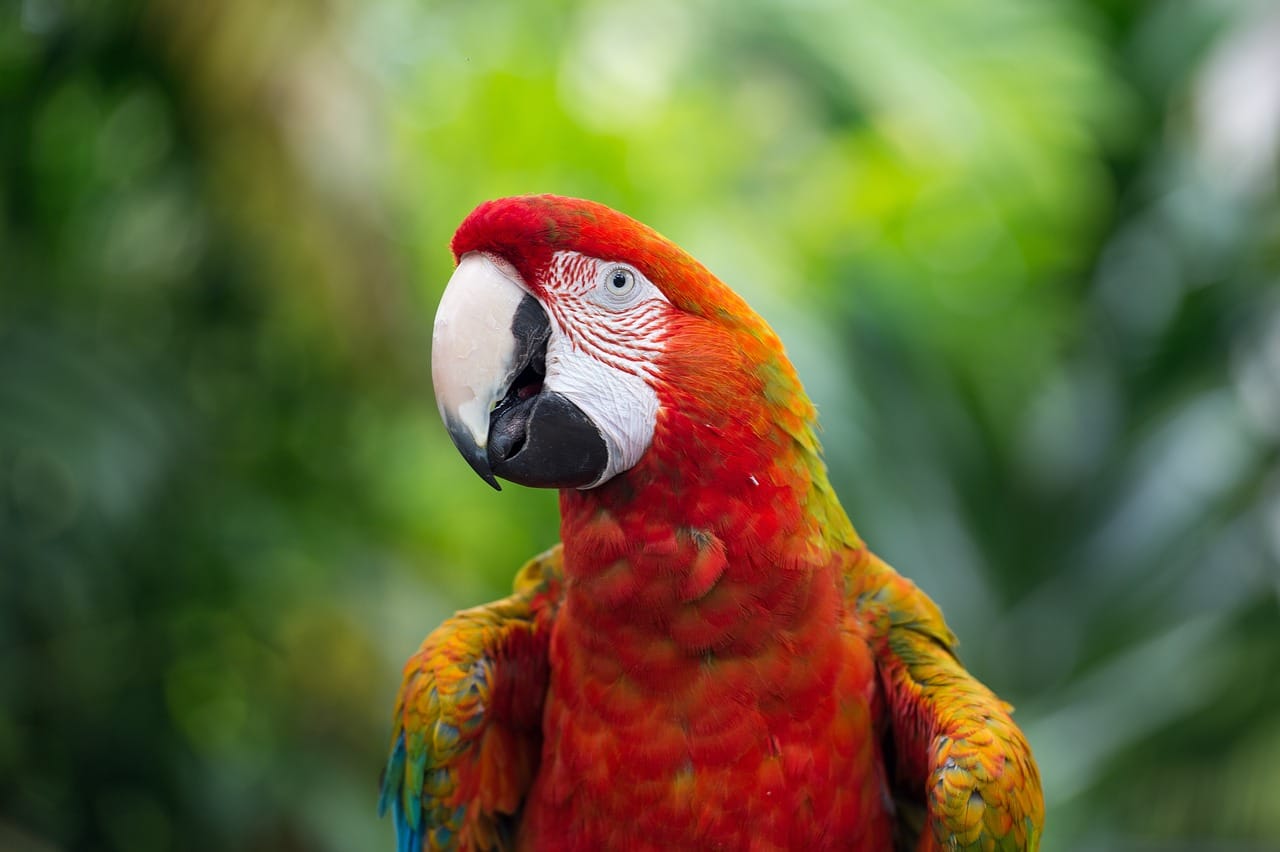
Scarlet macaws represent the quintessential image of tropical big parrots, with their brilliant red, yellow, and blue plumage creating one of nature’s most spectacular color displays. These impressive birds inhabit rainforests from Mexico through South America, adapting to various forest types and elevation ranges.
Among big parrots, scarlet macaws demonstrate remarkable intelligence and complex social behaviors. Their loud vocalizations can be heard over a mile away, serving as communication tools for maintaining contact between scattered flock members and establishing territorial boundaries.
Social Structure and Communication
Scarlet macaws exhibit sophisticated social hierarchies within their flocks, with established pairs maintaining dominance over younger, unpaired individuals. Their communication system includes over 30 distinct vocalizations, each serving specific purposes such as alarm calls, contact calls, and courtship songs.
These big parrots also engage in elaborate aerial displays, particularly during breeding season. Pairs perform synchronized flights, demonstrating their bond strength and flying skills to potential rivals and mates.
Dietary Preferences and Foraging Strategies
Scarlet macaws possess diverse dietary requirements, consuming over 200 different plant species throughout their range. Their powerful beaks allow them to access seeds and fruits that remain unavailable to smaller bird species, positioning them as important seed dispersers in their ecosystems.
Clay lick visitation represents a crucial aspect of scarlet macaw behavior, with hundreds of individuals gathering at specific riverside locations to consume mineral-rich clay. This behavior helps neutralize toxins from their plant-based diet and provides essential nutrients for reproduction and feather development.
Blue-and-Yellow Macaws: Spectacular Big Parrots of South America
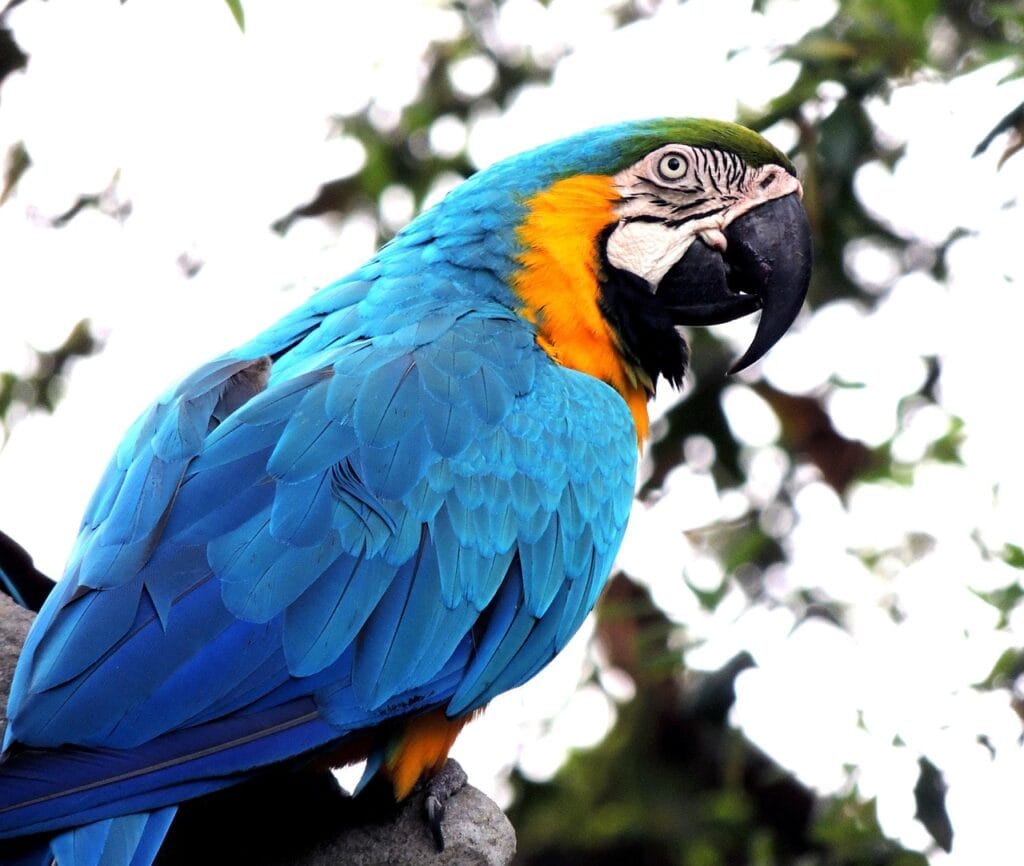
Blue-and-yellow macaws, also known as blue-and-gold macaws, represent one of the most widely distributed species among big parrots in South America. Their striking coloration and impressive size make them flagship species for rainforest conservation efforts throughout their range.
These magnificent birds demonstrate remarkable adaptability, inhabiting various forest types from dense Amazon rainforest to gallery forests along major rivers. Their ability to exploit diverse habitats has contributed to their relatively stable population status compared to other big parrots.
Foraging Ecology and Dietary Flexibility
Blue-and-yellow macaws exhibit exceptional dietary flexibility among big parrots, consuming over 300 different food items throughout their range. Their foraging strategies include both solitary and group feeding, depending on resource availability and seasonal conditions.
Their powerful flight capabilities allow them to travel long distances in search of fruiting trees, with some individuals covering over 50 kilometers daily during peak foraging periods. This mobility enables them to track seasonal resource availability across vast territories.
Cultural Significance and Human Interactions
Throughout South America, blue-and-yellow macaws hold significant cultural importance for indigenous communities. Traditional stories and ceremonies often feature these big parrots as symbols of wisdom, strength, and connection to the forest spirits.
Modern ecotourism initiatives capitalize on the appeal of blue-and-yellow macaws, generating revenue for local communities while promoting conservation awareness. Responsible wildlife viewing programs provide sustainable alternatives to habitat destruction and bird capture.
Conservation Challenges Facing Big Parrots Worldwide
The conservation status of big parrots reflects broader environmental challenges affecting tropical ecosystems worldwide. Habitat destruction remains the primary threat, with deforestation rates in critical parrot habitats exceeding sustainable levels across multiple continents.
Climate change compounds these challenges by altering precipitation patterns, temperature ranges, and food availability. Big parrots, with their specialized dietary requirements and long generation times, face particular difficulties adapting to rapidly changing environmental conditions.
Habitat Loss and Fragmentation
Large-scale agricultural expansion, logging operations, and urban development continue to reduce available habitat for big parrots. The fragmentation of remaining forest patches isolates populations and reduces genetic diversity, making recovery efforts increasingly difficult.
Habitat corridors connecting protected areas represent crucial conservation tools for maintaining viable populations of big parrots. These corridors allow genetic exchange between isolated populations and provide access to diverse food sources throughout the year.
Illegal Trade and Capture Pressures
The international pet trade continues to threaten wild populations of big parrots, despite legal protections and CITES regulations. High market values for rare species create incentives for illegal capture and smuggling operations.
Law enforcement efforts focus on disrupting trafficking networks and prosecuting wildlife criminals. Education programs in source countries emphasize the ecological importance of big parrots and the legal consequences of involvement in illegal trade.
Research and Monitoring Programs for Big Parrots
Modern research techniques have revolutionized our understanding of big parrots and their conservation needs. Satellite telemetry, genetic analysis, and long-term demographic studies provide crucial data for developing effective conservation strategies.
Citizen science programs engage local communities in monitoring efforts, expanding research capacity while building conservation awareness. These collaborative approaches have proven particularly effective for tracking population trends and identifying critical habitat areas.
Technological Advances in Parrot Research
GPS tracking devices reveal detailed information about big parrots’ daily movements, habitat preferences, and resource requirements. This technology has uncovered previously unknown aspects of their ecology, including seasonal migration patterns and critical feeding areas.
Bioacoustic monitoring systems use artificial intelligence to identify and count big parrots based on their vocalizations. These automated systems provide cost-effective methods for monitoring remote populations and detecting population changes over time.
Genetic Research and Population Management
DNA analysis helps researchers understand population structure, genetic diversity, and evolutionary relationships among big parrots. This information guides breeding programs and informs decisions about population management and translocation efforts.
Genetic rescue programs introduce new genetic material into small, isolated populations to combat inbreeding depression and maintain evolutionary potential. These techniques have shown promise for several endangered species of big parrots.
Future Prospects for Big Parrots Conservation
The future of big parrots depends on coordinated international conservation efforts combining habitat protection, species-specific management, and community engagement. Success stories from intensive management programs demonstrate that recovery is possible with sufficient resources and commitment.
Emerging technologies offer new opportunities for big parrots conservation, from drone surveys to artificial intelligence applications. These tools enhance monitoring capabilities while reducing costs and human resources required for effective conservation programs.
Climate Change Adaptation Strategies
Conservation strategies must incorporate climate change projections to ensure long-term viability of big parrots populations. Assisted migration, habitat restoration, and genetic rescue may become necessary tools for maintaining species in rapidly changing environments.
Adaptive management approaches allow conservation programs to adjust strategies based on new information and changing conditions. This flexibility is crucial for addressing the complex, interconnected challenges facing big parrots in the 21st century.
Community-Based Conservation Initiatives
Successful conservation of big parrots requires active participation from local communities living in and around critical habitats. Economic incentives, education programs, and cultural preservation efforts can align community interests with conservation goals.
Ecotourism development provides sustainable income alternatives while generating funds for conservation activities. Well-managed tourism programs can create positive economic incentives for protecting big parrots and their habitats.
Conclusion: Protecting Earth’s Magnificent Big Parrots
The six species of big parrots highlighted in this comprehensive overview represent some of Earth’s most remarkable avian achievements. From the aerial mastery of hyacinth macaws to the unique terrestrial adaptations of kakapos, these magnificent birds demonstrate the incredible diversity possible within the parrot family.
Each species of big parrots faces unique conservation challenges requiring specialized approaches and sustained commitment. The success of recovery efforts depends on international cooperation, adequate funding, and the dedication of researchers, conservationists, and local communities working together toward common goals.
Understanding and appreciating big parrots extends beyond their impressive physical characteristics to encompass their ecological roles, behavioral complexity, and cultural significance. These remarkable birds serve as ambassadors for their ecosystems, inspiring conservation efforts that benefit countless other species sharing their habitats.
The future of big parrots remains uncertain, but ongoing conservation efforts provide hope for their long-term survival. By supporting habitat protection, research programs, and sustainable development initiatives, we can ensure that future generations will continue to marvel at these magnificent creatures that represent the pinnacle of avian evolution.
FAQ
What is the main threat to big parrots worldwide?
Habitat destruction is the primary threat to big parrots globally, followed by illegal capture for the pet trade and climate change impacts on their food sources and nesting sites.
How long do big parrots typically live in the wild?
Big parrots are among the longest-lived birds, with lifespans ranging from 50-100+ years depending on the species. Palm cockatoos can live over 100 years, while most macaw species live 60-80 years in the wild.
Which species is considered the largest parrot in the world?
The hyacinth macaw is the largest flying parrot by length, reaching up to 3 feet 3 inches, while the kakapo is the heaviest parrot species, weighing up to 13 pounds.
Can big parrots be kept as pets?
While some big parrots can be kept in captivity, they require extensive specialized care, large enclosures, and long-term commitment due to their size, intelligence, and lifespans. Many species are protected by international law and cannot be legally owned as pets.
Did you enjoy this article?
Help other pet lovers benefit too — Share it on social media! 🐾💚

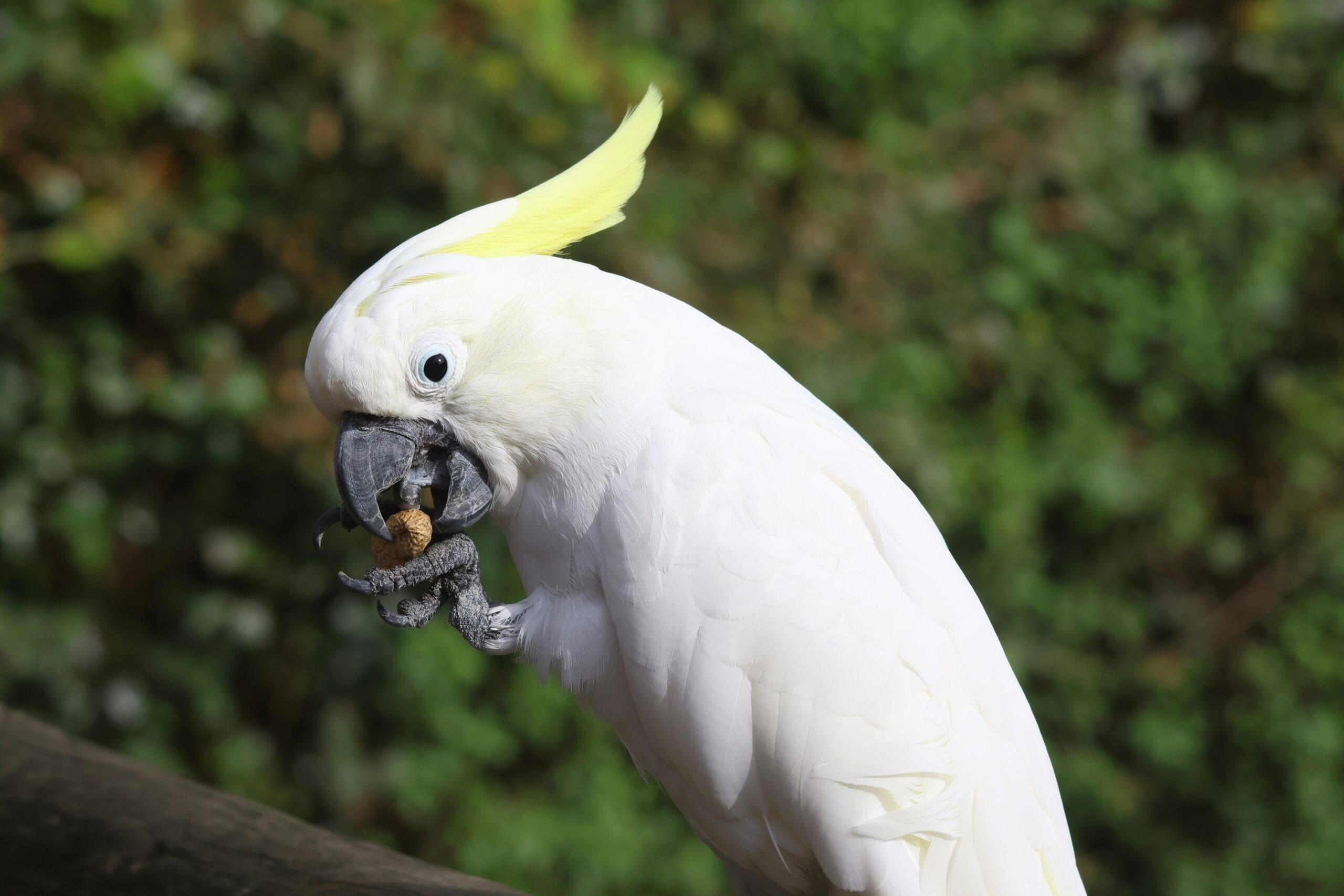
Leave a Reply